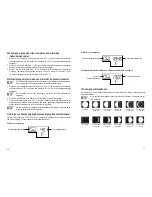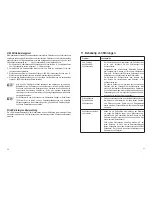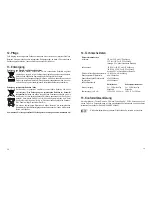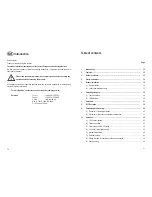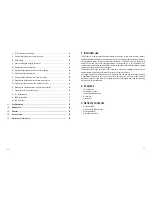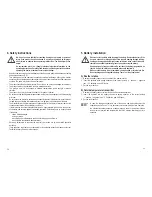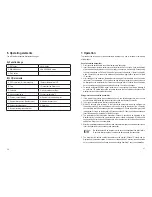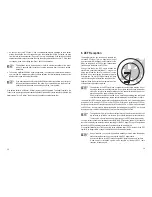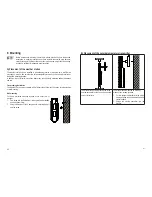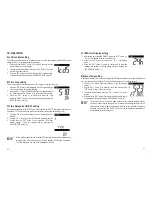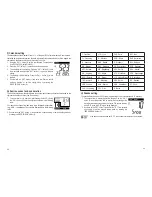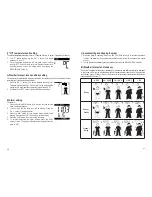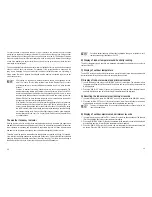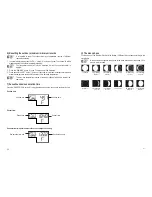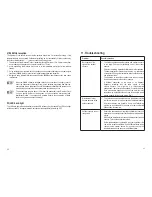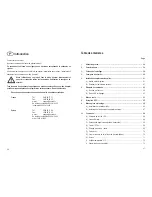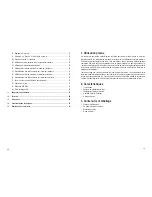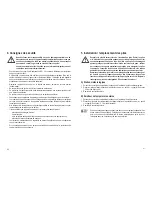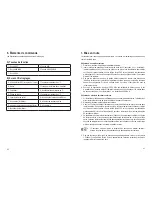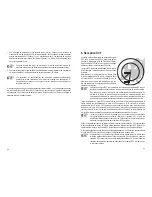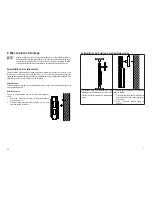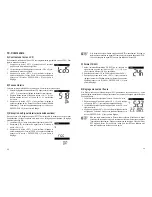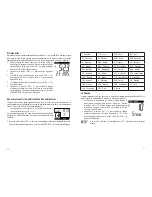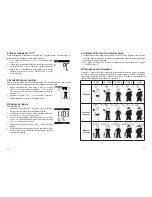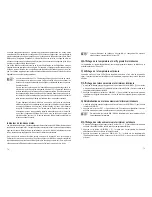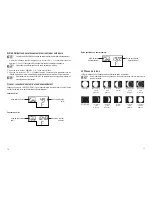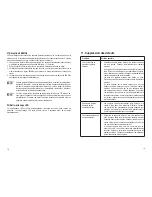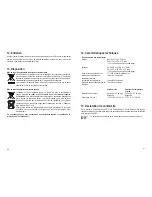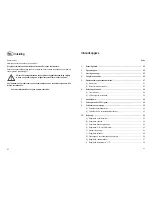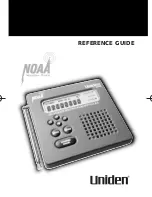
5
53
V) 868 MHz reception
The Weather Clock should receive the temperature data within 5 minutes after set-up. If the
temperature data is not received 5 minutes after setting up (not successfully 3 times continuously,
the outdoor display shows “- - -” ), please check the following points:
The distance of the Weather Clock or transmitter should be at least 1.5 to meters away from
any interfering sources such as computer monitors or TV sets.
Avoid positioning the Weather Clock onto or in the immediate proximity of metal window
frames.
Using other electrical products such as headphones or speakers operating on the same signal
frequency (868MHz) may prevent correct signal transmission and reception.
Neighbors using electrical devices operating on the 868MHz signal frequency can also cause
interference.
When the 868MHz signal is received correctly, do not re-open the battery cover of
either the transmitter or Weather Clock, as the batteries may spring free from the
contacts and force a false reset. Should this happen accidentally then reset all units
(see Setting up above) otherwise transmission problems may occur.
The transmission range is about 100 m from the transmitter to the Weather Clock
(in open space). However, this depends on the surrounding environment and
interference levels. If no reception is possible despite the observation of these
factors, all system units have to be reset.
W) LED back-light
The LED back-light will be automatically switched ON when any key is pressed. The LED back-light
will be switched on for approximately 9 seconds before automatically switching OFF.
1.
.
3.
4.
11. Troubleshooting
Problem
Possible solution
No reception of the
signal of the outdoor
sensors
The distance between weather station and outdoor sensors
is too large. Change the installation site of the outdoor
sensors.
Objects or shielding materials interfere with radio reception.
The same applies to other electronic devices, e.g. televisions
or computers. Change the installation site of outdoor sensors
and weather station.
The batteries of the outdoor sensors are weak or empty.
Insert new batteries into the outdoor sensors.
A different transmitter on the same or an adjacent
frequency interferes with the radio signal of the
outdoor sensors. This might be e.g. radio-controlled
headphones, radio-controlled speakers or similar devices.
Such products are usually not in use all the time; the radio
reception may be faultless the next day, for example, which
makes a search for the cause more difficult.
•
•
•
•
Disturbance of other
devices because of the
outdoor sensors
The outdoor sensors send their data to the weather station
in different intervals. In this brief period of time disturbances
from other devices are possible. A very brief interfering
signal may be noticeable in the case of a radio controlled
headphones, for example.
•
Outdoor sensors are not
recognised
Stick to the sequence when inserting the batteries. Insert the
batteries in the outdoor sensor first and then into the weather
station.
Wait until the weather station receives a data packet from the
sensors. This can take several minutes!
If other radio sensors are operated, e.g. by your neighbour, this
can lead to reception problems. Use a different transmission
channel on the outdoor sensor. It may help to set up the
weather station and the sensors in a different place.
•
•
•

